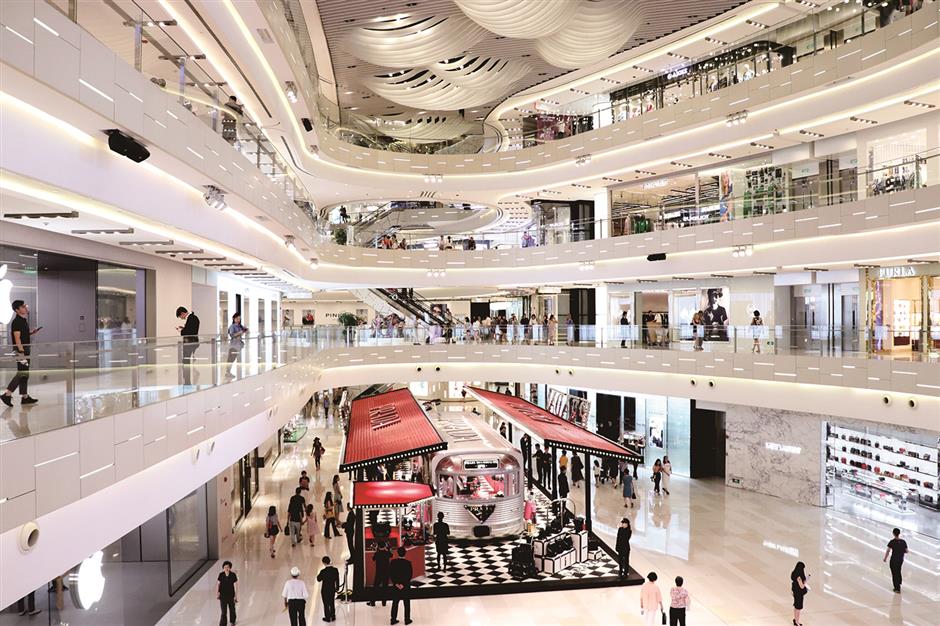A new report has shed light on the retailers pioneering the global trends shaping the retail landscape of tomorrow.
Blurring the boundaries of physical and digital, state-of-the-art experiential retailing, ultra-convenience and the adoption of strong social messaging are some of the trends taking off across the globe, according to the Retail Doctor’s Global Retail Trends 2019 whitepaper.
The emergence of new technologies will continue to drive new innovations for both brick-and-mortar and online as brands across the globe test the boundaries of retail, according to the report, which covers four key global trends and features in-depth case studies.
- Omniexperience
The first key trend, the rise of omniexperience, has seen retailers across the world embrace new technological and digital opportunities to maximise the customer experience, according to the paper, which was assembled by Brian Walker and his team at the Retail Doctor, a retail advisory firm.
As the rise of e-commerce allows consumers to shop anywhere, anytime, the lines between digital and physical are increasingly blurred, and services like Click and Collect and innovative payment options will continue to rise in popularity.
Brian Walker, founder of the Retail Doctor told Retailbiz that physical and online retail are no longer separate channels, but complimentary universes that retailers from across the globe are embracing.
“We’re seeing retailers adapting to a technology-fuelled environment and continually looking to differentiate, innovate and create loyalty with their customers. They’re also increasingly focused on customers insights and the integration of technology as an enabler of the physical experience,” he said.
HaoMaiYi
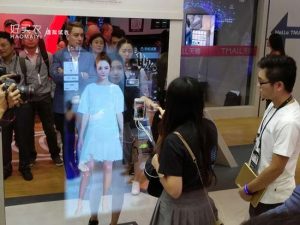
In China state-of-the-art hologram fitting room technology is taking personalised shopping to the next level, letting consumers superimpose clothes onto an augmented-reality silhouette of themselves.
HaoMaiYi uses a smart mirror which can develop 3D holograms of shoppers, which they can then use to “try on” looks from various brands.
Major brands like Marks & Spencer, Guess and Massimo Dutti use the technology, which also enables the shopper to download their specialised hologram into an app to reuse for subsequent purchases.

IKEA, Spain
Sweden’s most well-known furniture retailer is another brand pioneering the omniexperience with a flagship store in Madrid which leverages storytelling to create a unique in-store experience.
The retailer ‘s urban concept store in Madrid’s city centre is one of six of IKEA”s “stores of the future,” which sees the retailer moving away from a focus on DIY and towards helping consumers design their dream spaces using in-store tools and letting them buy these products online.
The store, which showcases products only for the living room, has 1,000 physical products on the shopfloor and sells the full range online. The space uses storytelling to showcase a series of four living rooms with stories about their inhabitants from Madrid, their lifestyle and how they designed their perfect living room.
The store also has a “living room lab” where customers can meet expert advisors to design their dream living room in five easy steps.
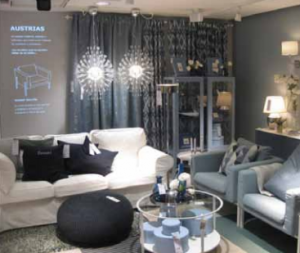
Pier X, Brazil
Another leading innovator, Pier X in Brazil is a phygital marketplace that uses state-of-the-art technology to optimise the shopper’s experience.
The shop is a multi-purpose space that uses an exclusive app which allows consumers to exchange a credit card or money at an in-store ATM and convert it into digital credit to use in-store.
Shoppers can buy products on-the-go, scanning the QR code on product labels, and fast-tracking the checkout process.
The store also dapples with experiential retailing, allowing consumers to buy services like yoga, guitar lessons or coffee, or even to rent the space out for events through the specialised app.
- Smart shopping
Retailers across the globe are embracing technology and transforming shop-floors to give consumers an ultra-convenient experience.
Time-poor customers are constantly on the look-out for convenience in the purchasing experience, and smart shopping is making it easier than ever before.
Mr Walker says the idea of smart shopping is often underpinned by an integrated omnichannel experience, knowing what the customer wants by leveraging predictive analytics and providing a range of unique differentiated experiences.
“Smart shopping really recognises customers’ who are poor on time. Retailers are using the classic retail shop in a different way, looking at space differently with fulfilment centres, smart space in stores and training and teaching consumers – it’s all about building loyalty and differentiated products,” he said.
More Mall – China
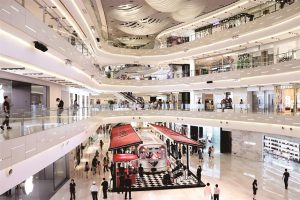
Alibaba’s signature shopping mall is pioneering in the ‘smart shopping’ space, giving consumers a state-of-the-art shopping experience and showcasing its future vision in the physical retail space.
The mall uses digital payment technology to improve the shopping experience for consumers, challenging traditional retail by allowing consumers to only pay via Alipay through a QR code linked to their mobile devices.
The mall also features a number of concept stores including Hema’s first concept store and a Guess AI-powered store.
Zara – UK
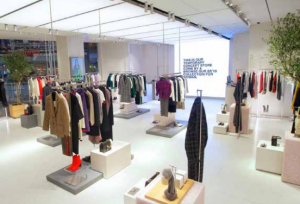
A ‘smart’ pop-up click-and-collect Zara in the UK is giving consumers the hyper-convenient retail experience they increasingly desire.
The shop allows consumers to purchase items and pay through their phone using the Zara app and collect products on the same day by using one of two automated collection points.
The store is powered by AI and uses smart changing-room technology with mirrors that provide personalised recommendations of products to consumers.
- Engagement
International retailers are increasingly looking to branch out beyond the confines of the traditional retail experience and engage consumers like never before.
Brands across the globe are offering a more personalised and humanised brick-and-mortar experience that is highly interactive, seeing the store become a social ‘hub’ and a space of learning and fun.
Mr Walker says retailers pioneering in this space are tapping into what it is that engages the consumer with their brand and offering shoppers an immersive experience based on this.
“It’s all about the ability of retailers to move across categories and ensure they provide a longer dwelling time for consumers, giving the customers the chance to engage in a brand experience,” he said.
L & T sports
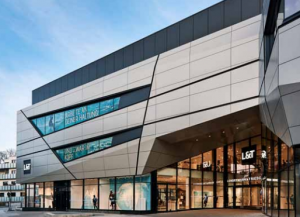
A 5,500 sqm sports store in Germany is setting a new bar in experiential retail, giving consumers an immersive experience like no other.
The L & T sports store in Berlin pushes the boundaries of brick-and-mortar retailing, integrating its store with a fully-functioning gym and wave pool.
Imagin Café – Spain
Well-known Spanish bank Caixabank is also pushing the boundaries of the traditional brick-and-mortar experience, with an exclusive experiential café.
The mobile-only bank’s café is a creative space that features a coffee shop, co-working rooms that can be booked for free and a large central space which can be booked for activities like concerts.
It also has a gaming area and multimedia labs with the latest technologies.
- Activism
As consumers grow more and more conscious of the social and environmental impacts of their decisions, retailers are looking to align with these value systems and make their ethical mark by taking a stand on big environmental and social issues across the globe.
Retailers are, more than ever, looking to demonstrate social responsibility and ethical business conduct through their brand, as consumers look to align with their brand’s messages, Mr Walker says.
“Customers want to associate themselves with a cause, a raison d’etre for their purchase with a view that the purchase will go to something for the greater good and retailers are building social utility to the experience,” he said.
Everlane – USA
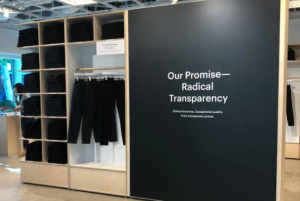
The US based apparel retailer is leading the way in socially responsible commerce with a focus on transparency and the ethical production of clothes.
The brand’s signature stores feature detailed information about products with signs, pamphlets, photos and tags on items with detailed information on the location of factories where the items were produced.
The store also utilises smart technology, featuring check-outs with detailed information about the customer’s purchase history and integrated experiential retailing in-store with events like classes and panels.
Social Foodies – Denmark
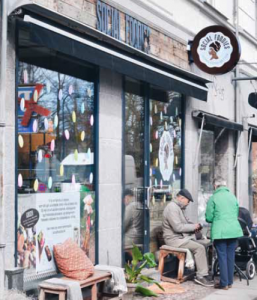
Danish confectionary shop Social Foodies sells sustainable sweets like ice cream and chocolate to support African farmers.
Most of the products sold in-store are made from materials produced in a chocolate factory built by the brand, with profits then reinvested into social projects in Africa and Denmark.
The cafe also has award-winning cream puffs or ‘flodeboller,’ which you can also learn to make in-store.

